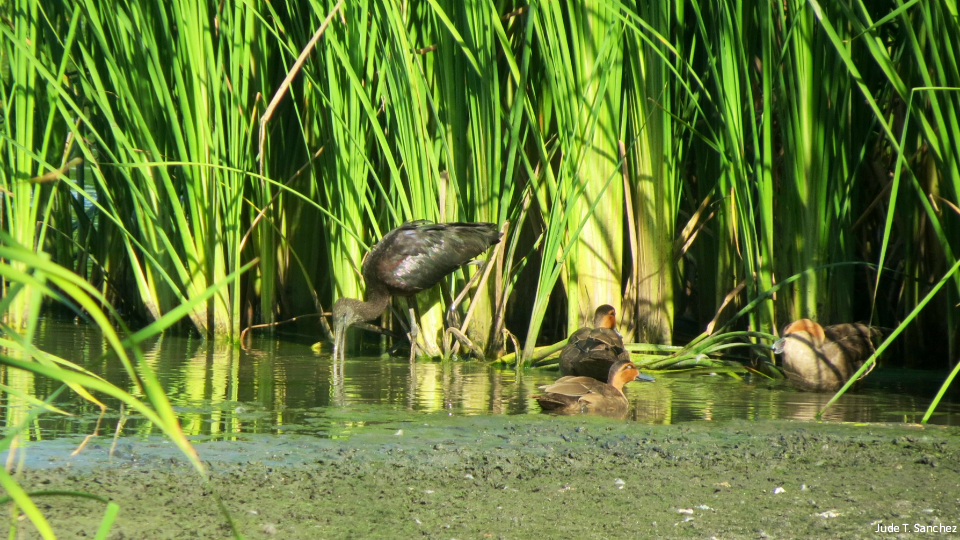Filtered By: Scitech
SciTech
First photo evidence of Glossy Ibis snapped in Luzon
By MADS BAJARIAS, Photos by JUDE T. SANCHEZ

A team of researchers from the Wild Bird Club of the Philippines taking part in a bird-migration study in Pagudpud, Ilocos Norte, snapped the first ever photographs of a wild Glossy Ibis (Plegadis falcinellus) in mainland Luzon on June 2.
The Glossy Ibis has a global range and is the most widespread of all ibis species, but it is very rarely observed in the Philippines, where its status is unclear.
Suspected breeding grounds
Scientists have long suspected that it breeds in Mindanao but it was only this year that at least one nest was documented in Tacurong, Sultan Kudarat. This species is believed to undergo post-breeding dispersal, with individuals sighted in Luzon but never photographed, until now. To date, the Glossy Ibis has not been reported in the Visayas.
Previous reports of the Glossy Ibis in Luzon have been limited to between September and November, making the discovery in Pagudpud a puzzle for experts. Whether the Pagudpud ibis is a temporary visitor from Mindanao or mainland Asia, or is a breeding resident in Ilocos Norte, is unknown.
The Pagudpud ibis was photographed in a shallow pond that also harbors other wetland birds, including the endemic Philippine Duck (Anas luzonica) and country resident Common Moorhen (Gallinula chloropus). The pond is inside a beach resort where hunting is prohibited, effectively resulting in a wetland nature park.
The ibis sighting in Pagudpud, along with the sightings earlier this year in Pampanga of the endangered Black-faced Spoonbill (Platalea minor), underscores the importance of wetlands as a feeding area and sanctuary for wildlife.


Threatened wetlands
Wetlands "are among the most threatened ecosystems of the Philippines and the rates of habitat loss are comparable to those of the forest loss," according to ornithologist Arne Erik Jensen, head of the WBCP Records Committee, in a paper about the status of Philippine wetlands.
Wetlands "are among the most threatened ecosystems of the Philippines and the rates of habitat loss are comparable to those of the forest loss," according to ornithologist Arne Erik Jensen, head of the WBCP Records Committee, in a paper about the status of Philippine wetlands.
Wetland ecosystems promote biodiversity, act as a disaster risk reduction and climate change mitigation tool and provide a source of livelihood for rural communities. But they are under severe threat from conversion into agricultural plantations and reclamation for aquaculture and human settlements, Jensen wrote.
However, despite "the grim situation" facing wetlands in the Philippines, "there are still a large number of mainly smaller wetlands spread along the country’s coastline, and many of these have yet to be researched for their ornithological values," Jensen stated. — TJD, GMA News
Mads Bajarias is a founding member of the Wild Bird Club of the Philippines, a nonprofit group that seeks to protect Philippine birds and their habitats. The club can also be found on Facebook. The opinions expressed in this contributed article are those of the author and do not necessarily reflect the views of GMA News Online.
More Videos
Most Popular



